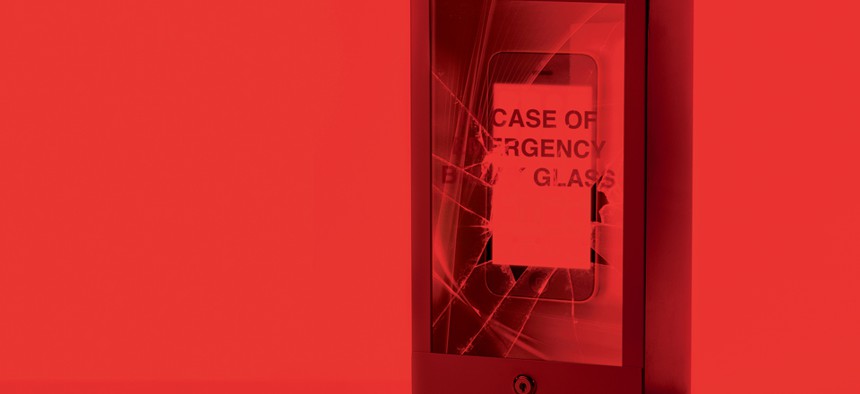Connecting state and local government leaders
The Internet of Things is ushering in a new era of proactive citizenry.
In 1988, a scientist at Xerox PARC named Mark D. Weiser put forward a novel vision for the future. Computer hardware, he said, would migrate from deskbound PCs to pads, boards, and “smart” systems that were part of the physical environment. The term Weiser gave this new sensing environment was “ubiquitous computing.” Today, it’s arrived by a different name, the Internet of Things.
The total number of devices connected to the Internet exceeded the size of the global human population in 2008 or so, and continues to grow far faster, according to Cisco. The technology firm forecasts that there will be 50 billion machine-to-machine devices in existence by 2020, up from 13 billion in 2013. It’s a revolution that promises greater efficiency in the way businesses and governments deliver services. But to understand its most disruptive potential, look at how citizens began to use the Internet of Things to change their environment. It’s a consumer-powered revolution with big implications for government.
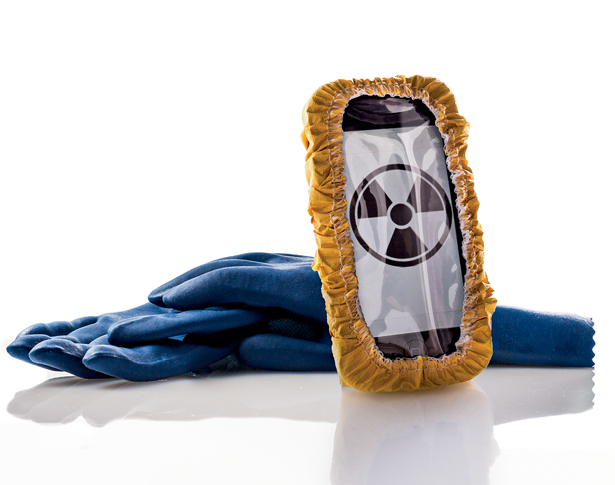
The Winds of Fukushima
In March 2011, not long after the news of the nuclear meltdown at the Fukushima Daiichi nuclear power plant spread throughout Japan, thousands of people across the country were tweeting Geiger counter data. Software engineer Seigo Ishino was living in Yokohama and spending his free time as a member of a community of designers, engineers, hackers and hobbyists who built sensors and installed them in buildings and elsewhere throughout the built environment to monitor energy use. The community was centered around a platform then called Pachube, which allowed users with sensor data to share it in real time on the group’s site. Not long after the quake struck, hundreds of Pachube users were streaming their data directly to the Pachube site.
Seigo began working on a smartphone app for Android that combined Google maps, real-time information about radiation levels and publicly available data about wind currents. The resulting Winds of Fukushima app worked as a sort of living map that provided constant information not just on where radiation existed but also where it was going, in the form of bright blue arrows. The app confirmed that radiation was spreading far wider than the government was indicating in news reports.
Winds of Fukushima was hardly a technological miracle. It took a very conventional stream of data (current wind direction), combined it with real-time readings of radiation and made these combined data available in a format that the public could easily find and use: a Google map. Its most revolutionary aspect is how quickly it emerged in the wake of the disaster. A decade ago, the task of coordinating among hundreds of Geiger counter-armed volunteers, building a platform for all of them to stream data, and finding a vendor willing to sell the software internationally was neither cheap nor easy. Thanks to communities of interconnected amateur techies, open APIs like Google Maps, and direct-to-market software vending platforms like the Android app stores, Seigo was able to build and publish Winds of Fukushima from a small Yokohama apartment in virtually no time at all. The app went live in the Android store about six weeks after the initial quake, but it actually took Seigo only a few days to create it.
Pachube (now Xively) was started by an architect named Usman Haque, who wanted to build a sensing feature into his building designs so that years after construction he and his fellow designers could log on to Pachube and get a sense of how the buildings were being used. He wanted to let the occupants, too, reconfigure their living environments around their actual use patterns, their living data.
A world that senses its occupants and shares that information may be one where people become much smarter about how they live. It’s also a world in which information that was accessible only to government suddenly becomes available to hackers and activists. Depending on the content of that information, and the method you go about obtaining it, a simple civic act, such as monitoring radiation or trying to fix your local sewer system, can look provocative to the local authority whose power you just usurped.
That’s what another Pachube user named Leif Percifield discovered in New York when he attempted to use sensors and open networks to get people involved in fixing local water issues.
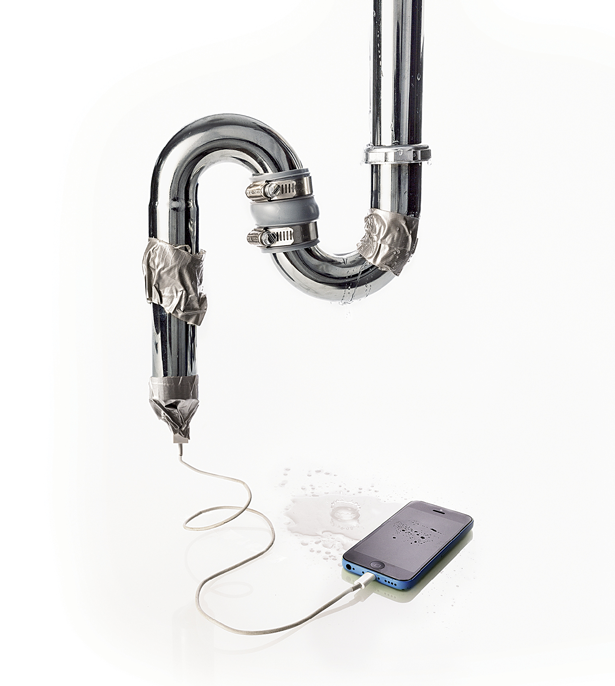
Think Before You Flush
Specifically, Percifield was looking to predict how dirty the water would be on any given day as a result of environmental factors. This information is of no real use to one person, but a community can edit its water usage, its showering and flushing, based on the sewage water level.
When Percifield attempted to install sensors into the New York City sewer system, city officials ordered him downtown and made it clear that he was “in trouble” for what he had done. He was told to cease his activities. Percifield believes this is because he was able to show how easy it is to get into the New York City sewage system. Everyone can agree, at least publicly, that fixing sewage backup should be a top priority. But when citizens armed with sensor boards suddenly start outflanking government officials on their own turf, tensions can rise. Percifield’s research led him, at one point, to lay sensors along Brooklyn’s Gowanus Canal, a Superfund site, and elsewhere across the city. Percifield’s Twitter feed @dontflushme turns live sensor data into a running, real-time report on New York’s sewer situation, with advice on how to save water and avoid adding to sewer runoff.
Most of us grew up in an environment where we comfortably assumed that local government always had more information than we did about what was going on in our city, certainly the best data on the state of infrastructure. We also instinctively trust local government as provider of information during an emergency, even when it’s an emergency in which we’re directly involved. See a fire? Call 911 and ask for services, wait for someone to come to where you are and tell you what’s happening.
The Internet of Things is ushering in a new era of proactive citizenry. It’s an era in which much of the most important information during a fire, a flood, a citywide disaster doesn’t come from government but from you and your suddenly empowered neighbors, people like Gordon Jones.
In the summer of 2007, Jones was working for Global Emergency Resources in Charleston, South Carolina, a company that markets a software tool for monitoring ambulances and hospitals during emergencies. Watching the local coverage of a memorial service for a group of local firefighters who died in a blaze, he realized that the technology he was developing could have saved lives: “I said to myself, ‘What if somebody, one of the people trapped inside the store, had a smartphone to broadcast what the scene looked like?’ That might have made a difference.”
Jones founded a company and shortly after announced the launch of the Guardian Watch app. Guardian Watch enabled anyone with a cellphone to live stream video and pictures of an event directly to emergency personnel.
But the story of Guardian Watch is also a cautionary tale. Not long after developing the app, Jones realized that for the service to really flourish, to save the life of someone in an emergency, or stanch a disaster affecting an entire city, it had to already be on phones, a lot of them. This presented the classic social startup Catch-22: the density problem. In order for Guardian Watch to become the next Facebook of disaster response, it had to already be the Facebook of disaster response; it had to have coverage, lots of users able to supply enough information and content to keep the app relevant.
Problem: The utility of Jones’ creation during an emergency is obvious to anyone who has seen the demo, but nobody joins a social network while literally running for her life. Jones realized that network growth would depend largely on people adopting the service for reasons other than disaster preparedness. He rebranded the service (at the time called 911 Observer) as an enhanced neighborhood-watch network system: immediate help in emergencies—both real and imagined.
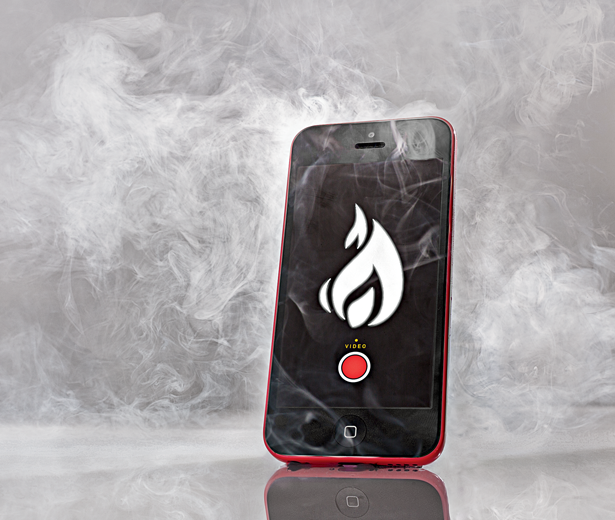
Citizen Policing
Jones’ first customer was the Richland County Sheriff’s Department in Augusta, Georgia. In effect, Guardian Watch allowed the department to crowdsource some of the more difficult aspects of evidence gathering.
This idea is not without precedent. One of Texas governor Rick Perry’s more creative legislative accomplishments was a program to digitally crowdsource border enforcement. The Texas Virtual Border Watch initiative enabled busybody constituents to monitor stretches of fence on the Texas-Mexico border from the comfort of their duct-taped La-Z-Boys, via live feed. The program was touted as a potential boon to taxpayers. The public was going to do for free what cost millions in pay to extra border guards.
The program failed for reasons having nothing to do with privacy and everything to do with why border patrolling is a hard job even on a good day. Watching a fence all day is boring. The site shut down in 2009 when, after an initial spike, traffic plummeted.
Guardian Watch allocated attentional resources to more interesting curated content, including but not limited to evidence of crime. Members could post pictures and videos from their phones into files such as “assault,” “burglary,” “domestic abuse,” even “suspicious behavior.” Much of the content uploaded was of dubious value to law enforcement. One picture, marked “sexual,” appeared to show a nude couple enjoying coitus in a park (or maybe a beached whale in a pasture?). Many of the videos in the “suspicious activity” file appeared to show pant legs and shoes, all clearly shot by accident.
To understand this potential imagine a future in which geo-tagged pictures and video—images captured in the moment and digitally attached to a location, time and person—take the place of unreliable witness testimony.
In addition to the clear privacy issues associated with this practice, there are questions of fecundity. The majority of content on social networking sites is personal and benign in nature, the daily annals of parenting and partying (sometimes both at once). A Tweet or post about a suspicious person in your neighborhood is buried among a lot of other noise not relevant to law enforcement. The same problem hobbles most crime surveillance programs in urban areas. The United Kingdom has been experimenting with a camera program for years, one very similar to Texas Virtual Border Watch, but staffed by professionals who are paid to watch footage. Like the Texas program the vast majority of the footage is noise. The cost of sifting through it is high but you can automate it somewhat through algorithms. Guardian Watch represents a clear innovation in the way it enlists human beings to manually select evidence that’s relevant to them.
The hope is that the citizen-policing system will self-police according to the same rules it uses to police others. Just as there exists a log of every Facebook tag and every domestic-disturbance call to the police, so every post on Guardian Watch creates data not just about the subject but also about the poster. Members who abuse the system lose influence.
Guardian Watch has just taken the extra step of “friending” law enforcement and like-minded people on the user’s behalf. Whether you see Jones’ little startup as a great way to improve public safety without increasing police budgets or as a lot of white people taking pictures of nonwhite people to make them nervous, Guardian Watch would exist without Gordon Jones.
To understand how that contributes to a change in the way citizens interact with government, you have to imagine the information flow going both ways, with citizens getting as much information from a future system like Guardian Watch as they give. Picture the dissemination of crime-mapping capability that you might see in a police department command center moving to the smartphones of police officers and continuing, eventually, on to consumers. In the same way computers used to be the size of rooms and were available for experts to use, then became objects people could access on desktops, and are now objects in our pockets, the dissemination of this type of big police data is going to follow the same path.
In the next 10 years, there’s no technological, economic, or even legal reason why every individual with a smartphone shouldn’t be able to download a live crime map showing both current and expected hot spots. This so-called predictive policing capability won’t just be something that happens around you; it will be a process that you participate in directly. Information will grow much more rich and meaningful when it’s combined with other bits of local data and personal information. Mike King, national law enforcement manager for mapping and data analysis firm Esri, sees this eventually as likely. “It’s happening today . . . When I talk about Esri moving through mobile and other opportunities, that’s the idea of getting this water to the end of the row,” by which he means getting big data capability into a form that’s usable to individual officers for a variety of tasks.
In many ways, this expanding, computer-connected environment is inconspicuous (as Weiser intended). The presence of sensors able to detect ammonia, a common component of explosive material, in the New York City subway, is not something you devote thought to when you’re taking the Downtown 6 train; you’re just glad it’s there.
Whether you see the potential or the threat, the Internet of Things is not a far-off dream. It’s here. We’ve been accepting the presence of more sensors in our environment for decades now. It’s impossible to argue against the usefulness of many of these systems and devices, like Japan’s Early Earthquake Warning system, or radon detection devices in subterranean structures, or home security systems that sense when a door is being opened and alert the police and homeowner.
For the owners of the copper wires, the fiber optic cables, the cellphone towers and the servers on which the Internet runs, the growth of the Internet of Things means massive future profits. The information technology research firm Gartner has predicted that the global market for “contextually aware computing” will exceed $96 billion per year by 2015. It’s no wonder such companies as Cisco, IBM and Verizon spend millions of dollars in ad, marketing and grant campaigns to persuade the world that a “smarter” planet is so very good for everyone. And it is, in many ways. But first and foremost, a smarter planet is good for them.
But the Internet of Things is not solely the product of companies and governments. It’s become a homegrown phenomenon as much as a big telecom money machine, and it’s empowering regular people to do more of the work formerly left to governments, which leaves government executives with a difficult problem of when to step in and when to step out of the way.
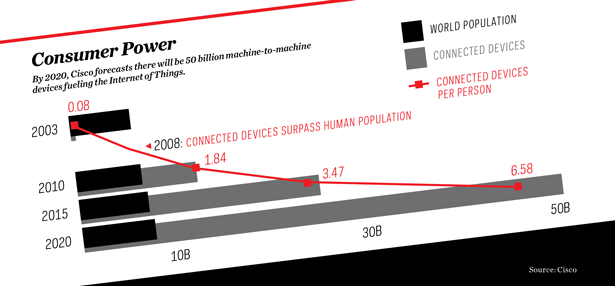
This article was adapted from The Naked Future: What Happens In a World That Anticipates Your Every Move by Patrick Tucker (Current, 2014). It was reprinted with the permission of the publisher.
Photography by Darren Braun
